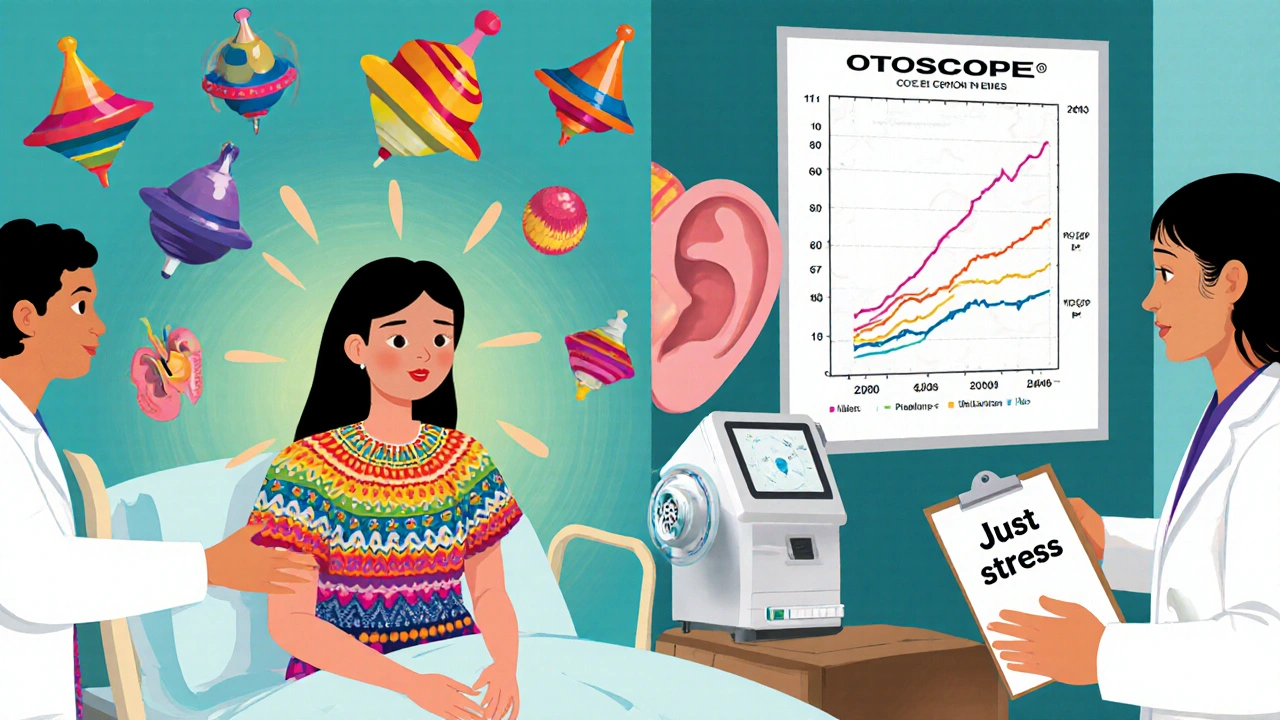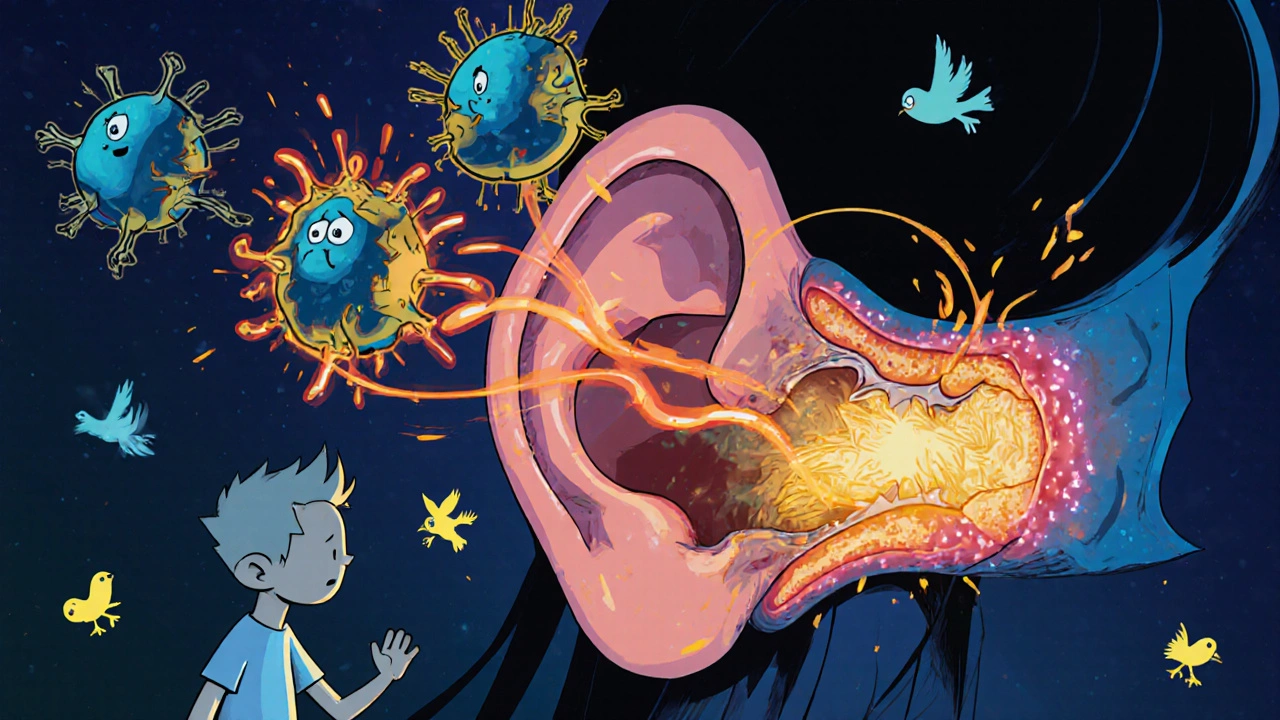Aminoglycoside Ototoxicity Risk Calculator
Assess Your Risk
This calculator estimates your risk of hearing loss or balance problems when taking aminoglycoside antibiotics based on factors discussed in the article.
About 1 in 500 people carry mutations that make them highly sensitive to aminoglycosides.
Risk increases significantly after 7 days of treatment.
Older age increases vulnerability of inner ear hair cells.
Lower kidney function means more drug remains in your system.
Existing hearing loss increases risk of further damage by 3.2x.
Noise exposure can increase ototoxicity risk by up to 52%.
Results will appear here after calculation
When you’re fighting a life-threatening infection, antibiotics are a lifeline. But some of the most powerful ones - aminoglycosides like gentamicin, amikacin, and tobramycin - come with a hidden cost: permanent hearing loss and balance problems that can last a lifetime. This isn’t rare. Up to 47% of patients on these drugs lose some hearing. Many don’t even know they’re at risk until it’s too late.
How Aminoglycosides Destroy Your Inner Ear
Aminoglycosides don’t just kill bacteria. They slip into your inner ear and start killing the tiny hair cells that turn sound and head movement into signals your brain understands. These cells don’t grow back. Once they’re gone, the damage is permanent.These antibiotics enter the inner ear through the bloodstream, crossing the blood-labyrinth barrier - a protective wall that usually keeps toxins out. Once inside, they latch onto mitochondria, the energy factories inside hair cells. This triggers a chain reaction: free radicals form, cells begin to self-destruct, and the hair cells die. Unlike cisplatin, which mainly kills cells through apoptosis (a controlled shutdown), aminoglycosides cause both apoptosis and messy, uncontrolled necrosis. That’s why the damage is faster and more widespread.
The first place this happens? The base of the cochlea - the part responsible for high-frequency sounds. That’s why people often notice trouble hearing birds chirping, children’s voices, or the letters ‘s’ and ‘th’ before they realize their hearing is changing. By the time standard hearing tests catch it, up to 70% of hair cells may already be dead.
Vestibular Damage: More Than Just Dizziness
While hearing loss gets attention, vestibular damage is just as devastating - and often overlooked. About 15-30% of patients on aminoglycosides lose function in their balance organs. This isn’t just feeling a little off. It means your brain can’t tell which way is up. Simple tasks like walking in the dark, turning your head quickly, or stepping off a curb become dangerous.One case from Johns Hopkins in 2022 followed a 34-year-old woman who developed bilateral vestibular loss after just 10 days of gentamicin for a urinary infection. She spent 14 months in vestibular rehab just to walk without falling. Many never fully recover.
Unlike hearing loss, vestibular damage doesn’t show up on audiograms. It requires specialized balance tests - and most hospitals don’t do them unless someone complains. That’s why so many patients are discharged with dizziness, told it’s “just stress,” and end up in physical therapy months later.
Who’s Most at Risk?
Not everyone reacts the same way. Genetics play a huge role. About 1 in 500 people carry a mitochondrial mutation - A1555G or C1494T - that makes their hair cells incredibly sensitive to aminoglycosides. These mutations disrupt how mitochondria make proteins, making them more likely to self-destruct when exposed to the drugs.There’s a test for this: OtoSCOPE®. It screens for these mutations with over 94% accuracy. But only a handful of hospitals use it routinely. Most patients get no genetic screening before treatment.
Other risk factors pile on:
- Existing high-frequency hearing loss - patients with it are 3.2 times more likely to lose hearing in lower frequencies
- High doses or long courses - treatment longer than 7 days increases risk sharply
- Older age - aging ears are more vulnerable
- Dehydration or kidney problems - aminoglycosides are cleared by the kidneys; poor clearance means higher drug levels
- Noise exposure - even moderate noise before or during treatment can boost ototoxicity by up to 52%
- Infection or inflammation - endotoxins from sepsis can increase drug uptake into the inner ear by 63%
And here’s the kicker: 80% of aminoglycoside use happens in low- and middle-income countries where monitoring, genetic testing, and even basic hearing tests aren’t available. These are often the same places battling multidrug-resistant tuberculosis - where aminoglycosides are a last-resort treatment. The people most in need are also the least protected.

Monitoring Can Save Hearing - If It’s Done Right
The good news? We know how to catch ototoxicity early. High-frequency audiometry (testing sounds from 9-16 kHz) detects damage 5-7 days before standard hearing tests (which only go up to 8 kHz). That’s critical. Catching it early means stopping the drug before more hair cells die.The American Speech-Language-Hearing Association recommends:
- Baseline hearing test within 24 hours of starting treatment
- Monitoring every 48-72 hours during therapy
- Therapeutic drug monitoring - checking peak and trough blood levels to keep doses in the safe range
Doing this reduces ototoxicity risk by 28%. But here’s the reality: only 37% of U.S. hospitals have formal monitoring protocols. In many places, patients get no hearing test before, during, or after treatment.
What’s Being Done to Fix This?
There’s real hope on the horizon. The FDA gave Fast Track status to ORC-13661 - a drug that, in Phase II trials, preserved 82% of hair cells when given with amikacin. It’s not a cure, but it’s a shield. If approved, it could be given as an IV alongside the antibiotic.Researchers are also exploring transtympanic injections - putting protective compounds directly into the middle ear to block aminoglycosides before they reach the inner ear. Early animal studies show up to 30 dB of hearing preservation.
Gene therapy is in early stages, too. The Hearing Restoration Project is testing ways to fix the mitochondrial mutations that make people vulnerable. In mice, they’ve cut ototoxicity by two-thirds.
But none of this matters if we don’t test for risk first. Genetic screening with OtoSCOPE® could prevent most cases in susceptible people. The test costs under $500. For a drug that can permanently blind someone to high-pitched sounds - or rob them of balance - that’s a small price.

Why Aren’t We Doing More?
The global aminoglycoside market is growing - projected to hit $3.15 billion by 2029 - because antibiotic resistance is rising. These drugs work. But their use is often a gamble. Patients aren’t warned. Doctors don’t always know the risks. Hospitals lack the resources or protocols to monitor.On Reddit’s audiology forum, 78% of people who reported aminoglycoside use said they lost hearing permanently. 63% still have tinnitus. In a 2022 survey, 89% of patients said they were never warned about the risk. One woman wrote: “I was told it was for my infection. No one said it could take my hearing.”
The FDA added black box warnings in 2021. The EMA now requires genetic screening for long-term use. But guidelines don’t change practice unless systems change. We need mandatory baseline hearing tests. We need genetic screening for high-risk patients. We need hospitals to track this like they track kidney function or liver enzymes.
What You Can Do
If you or someone you know is about to start an aminoglycoside:- Ask: “Is there a safer alternative?”
- Ask: “Will I get a baseline hearing test before treatment?”
- Ask: “Will I be monitored during treatment?”
- Ask: “Is genetic testing available?”
- Report any ringing in the ears, muffled hearing, or dizziness - immediately
Don’t assume your doctor knows. Many don’t. Ototoxicity is the third leading cause of acquired hearing loss in hospitals - after aging and noise. Yet it’s often treated like an unavoidable side effect. It’s not. It’s preventable - if we act.
The science is clear. The tools exist. What’s missing is the will to use them.


Written by Guy Boertje
View all posts by: Guy Boertje